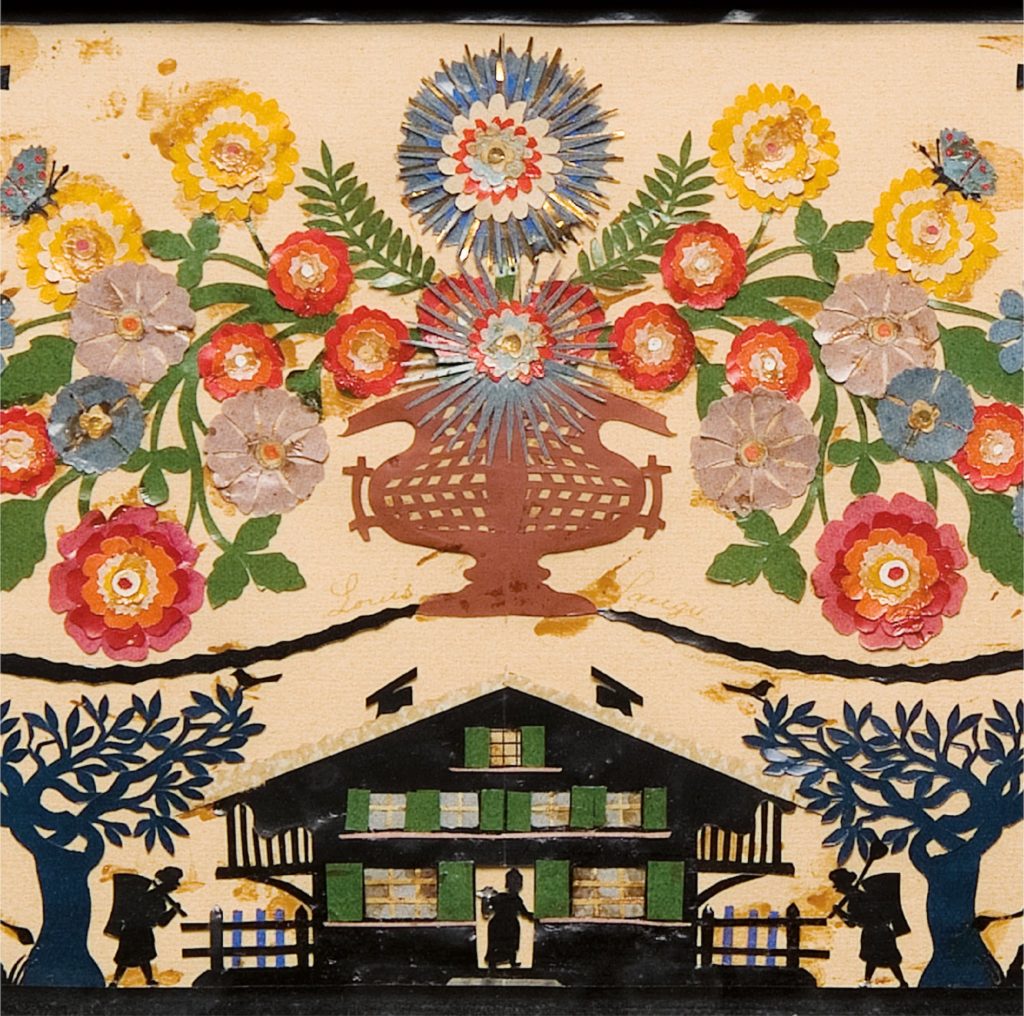For several years now, tourism has brought visitors to our valley who, with fresh eyes, have discovered furniture, paintings, rustic objects, and tools of exceptional artistic quality that had previously escaped the interest and originality of most locals, who were accustomed to this environment. Seduced by articles of industrial manufacture, which were more practical, lighter, and easier to clean, they did not hesitate to dispose of these old, obsolete objects, witnesses of a bygone way of life. They were delighted to be able to sell them to the first antique dealers and Swiss and foreign collectors. It should be noted that economic crises forced some to part with family treasures.
Alerted by this exodus, a few insightful men realized that there was a major interest in keeping these beautiful pieces in the country and preserving them for future generations. These men were selfless, for instead of collecting for themselves, as they could have done, they acted for the community, sometimes even advancing money for the purchase of a piece of furniture or a stained glass window. They worked with a commitment and a sacred fire of true prophets.
At the outset, the Association had no financial means and there were no exhibition premises. For ten years, the committee worked to recruit members, collect funds, organize temporary exhibitions and evenings with raffles. The problem of premises found an unexpected and almost miraculous solution when the prefect of Pays-d’Enhaut, Auguste Cottier, died in 1931 without leaving an heir. By will, he instituted a foundation to inherit his property and his prefecture house. This foundation was to be used for the development of the museum. From now on, the museum would be able to take up residence and begin to welcome visitors.
The rapprochement initiated more than ten years ago with the Swiss Association of Paper Cutting (Scherenschnitt Schweiz) led this institution to entrust us with its collection of 600 cutouts. They are shown to the public through successive exhibitions. Demonstrations, training, conferences, temporary exhibitions, and a library allow enthusiasts of this delicate art to expand their knowledge.
Paper cutting Art
The history of paper cutting in Switzerland dates back to the 17th century, when artisans began creating works of art by cutting patterns into thin paper. This tradition has developed over the centuries, particularly in the region of Pays-d’Enhaut where local artisans have created exceptional pieces.
It is in this context that the Museum of the Old Pays-d’Enhaut opened its doors in 1922, with the aim of preserving and promoting the cultural and artistic heritage of the region. Over the years, the museum has acquired an impressive collection of paper cutouts, witnesses to the richness and diversity of this popular art.
In November 2022, the museum was expanded to accommodate the Swiss Centre for Paper Cutting, in order to better promote this unique artisanal tradition. This decision followed a long-standing collaboration between the Museum of the Old Pays-d’Enhaut and the Swiss Association for Paper Cutting (Scherenschnitt Schweiz), which entrusted its collection of 600 paper cutouts to the museum.
Today, the Swiss Centre for Paper Cutting is a must-visit destination for all art and craft enthusiasts. Visitors can admire a unique collection of paper cutouts, as well as temporary exhibitions and demonstrations. Training courses, conferences and a specialized library also allow enthusiasts to expand their knowledge and discover the different techniques used by Swiss artisans over the centuries. The Swiss Centre for Paper Cutting is a meeting and sharing place for all those who wish to discover and preserve this exceptional craft tradition.







